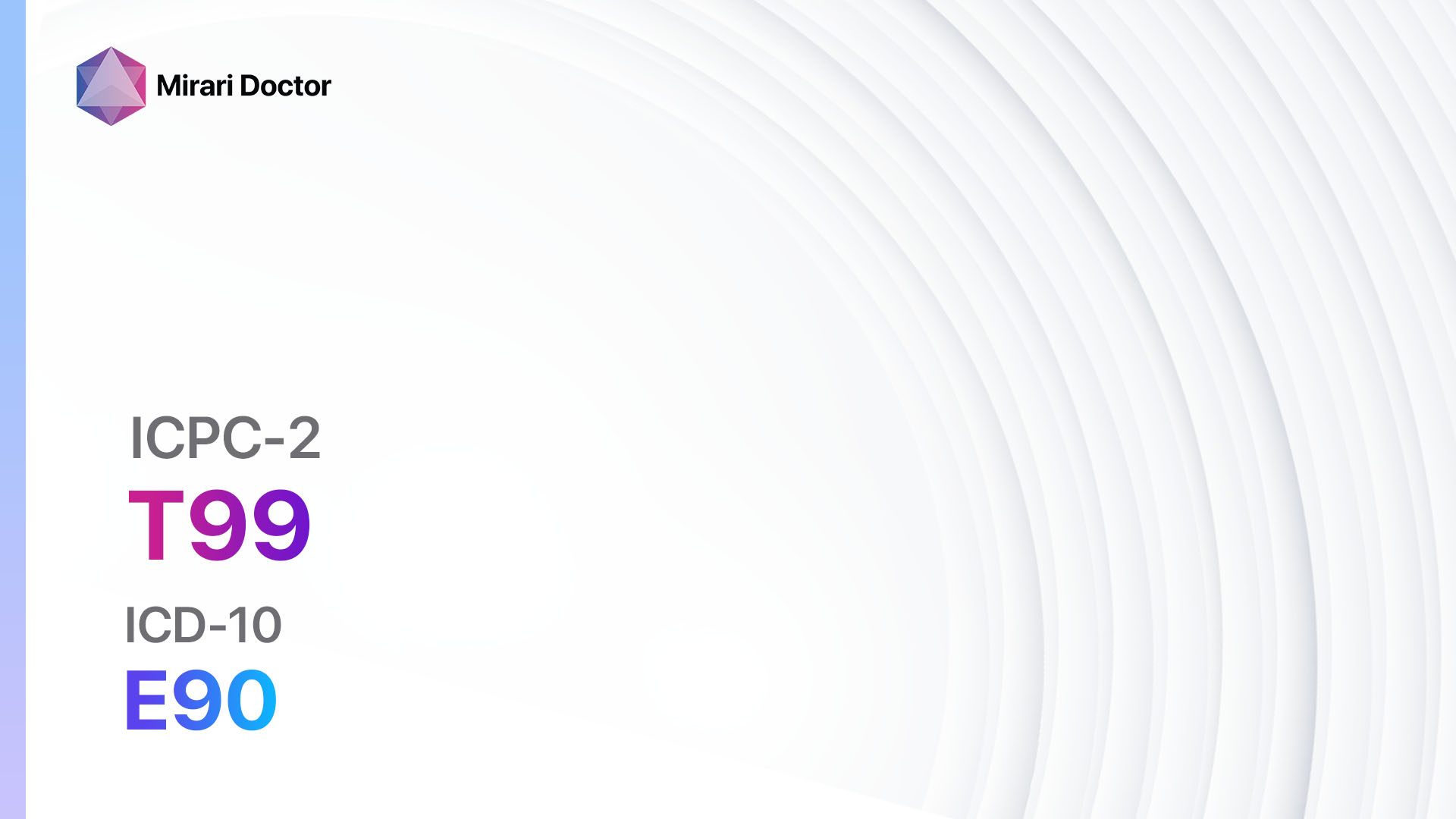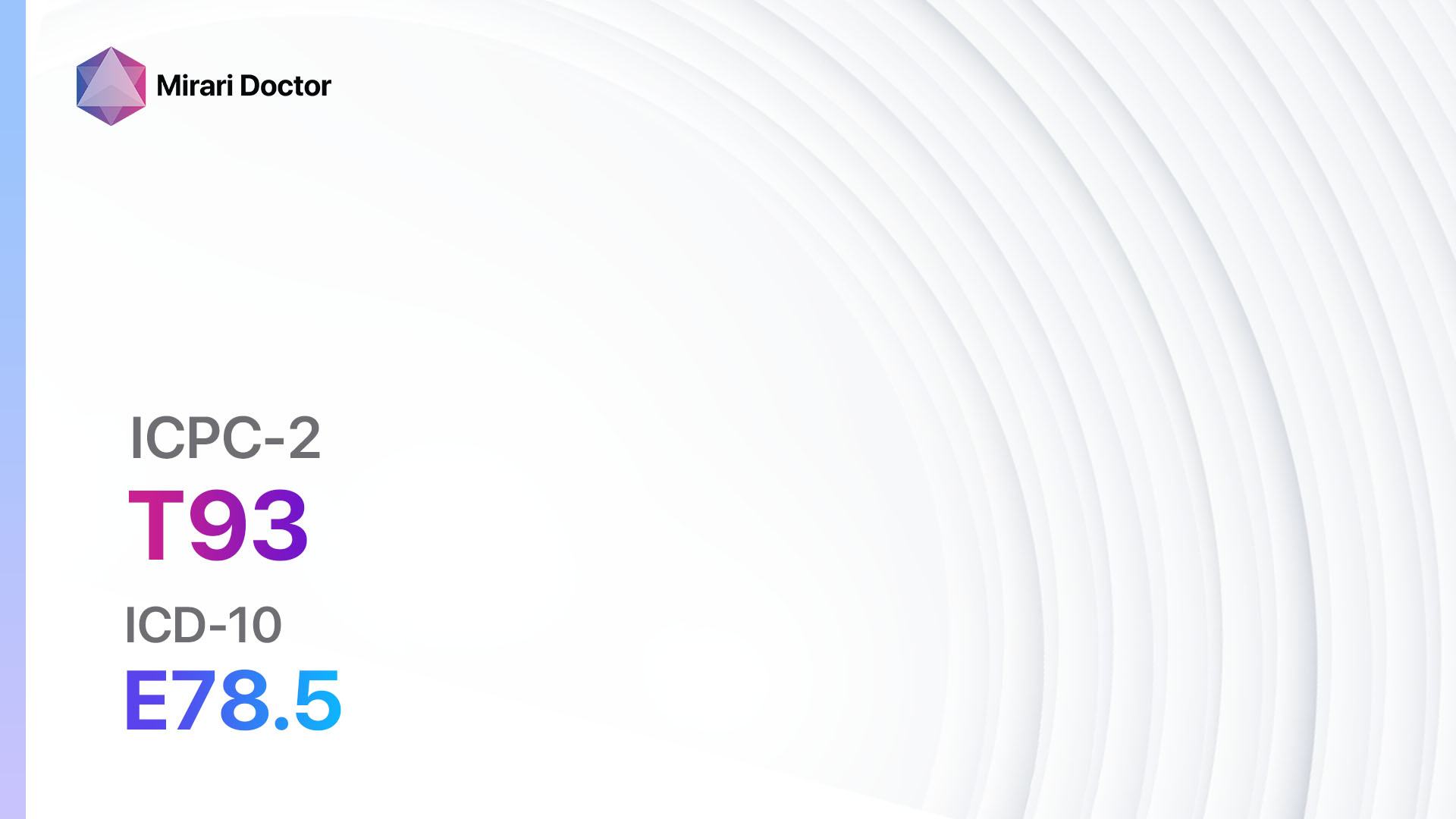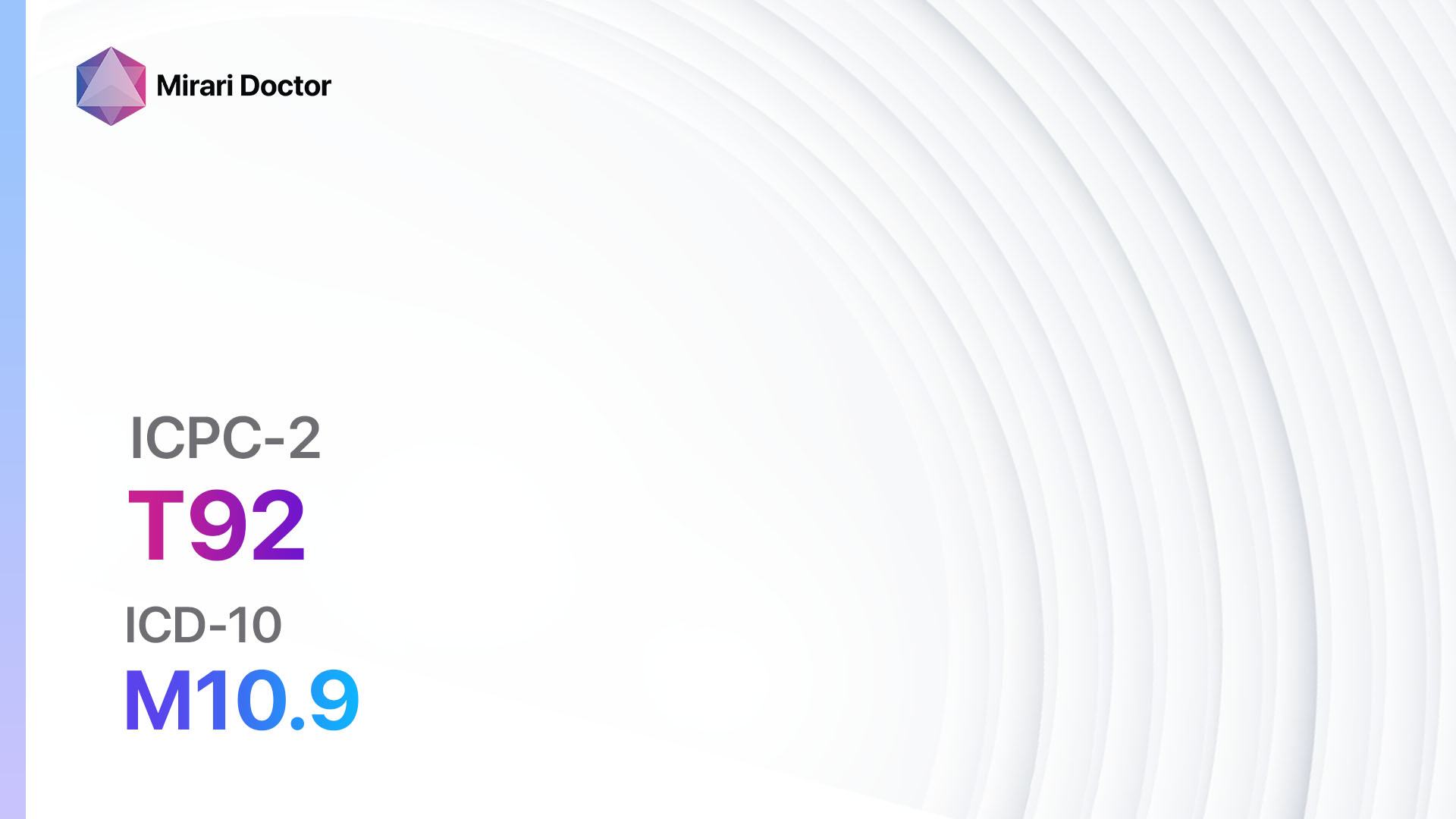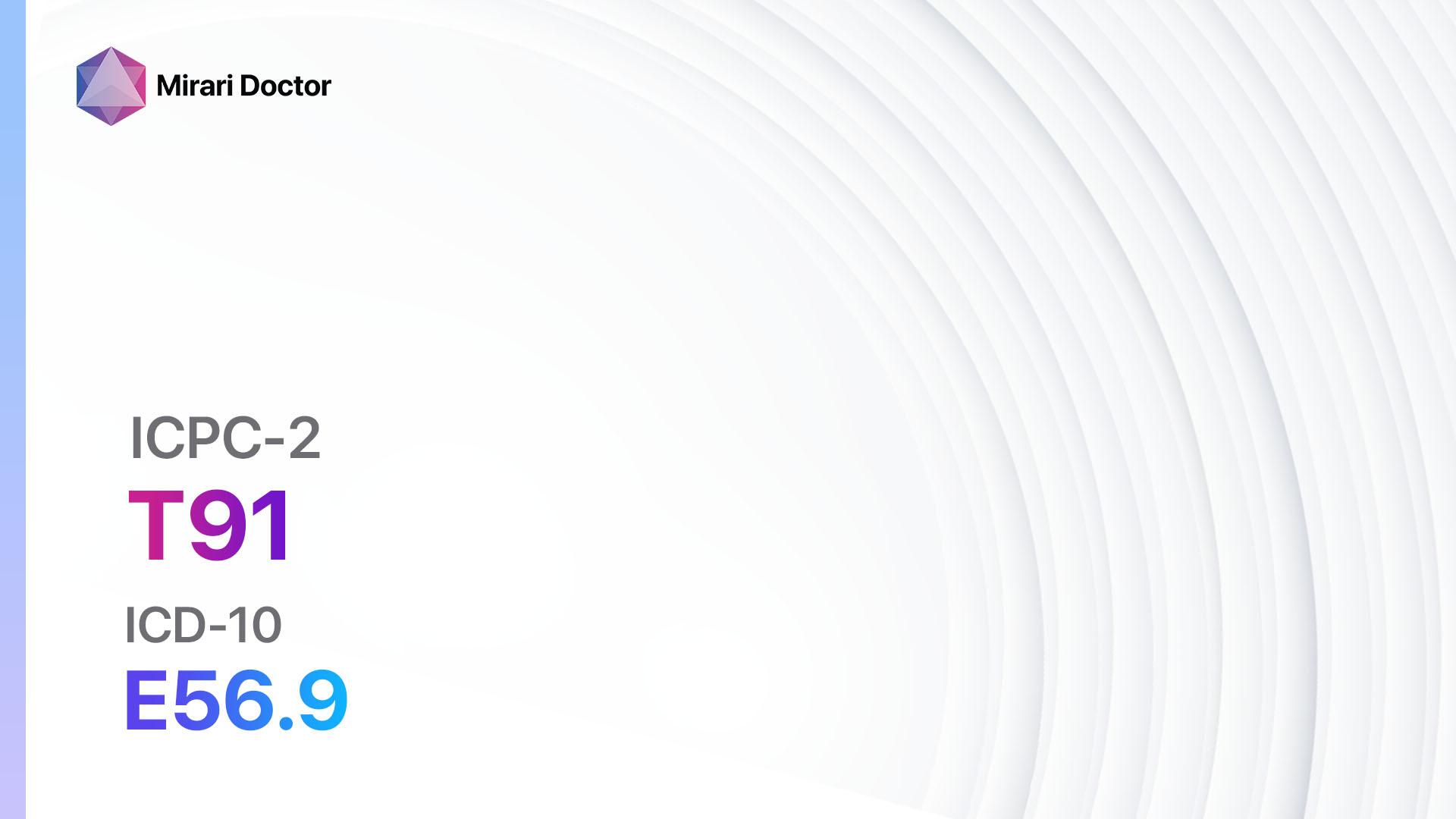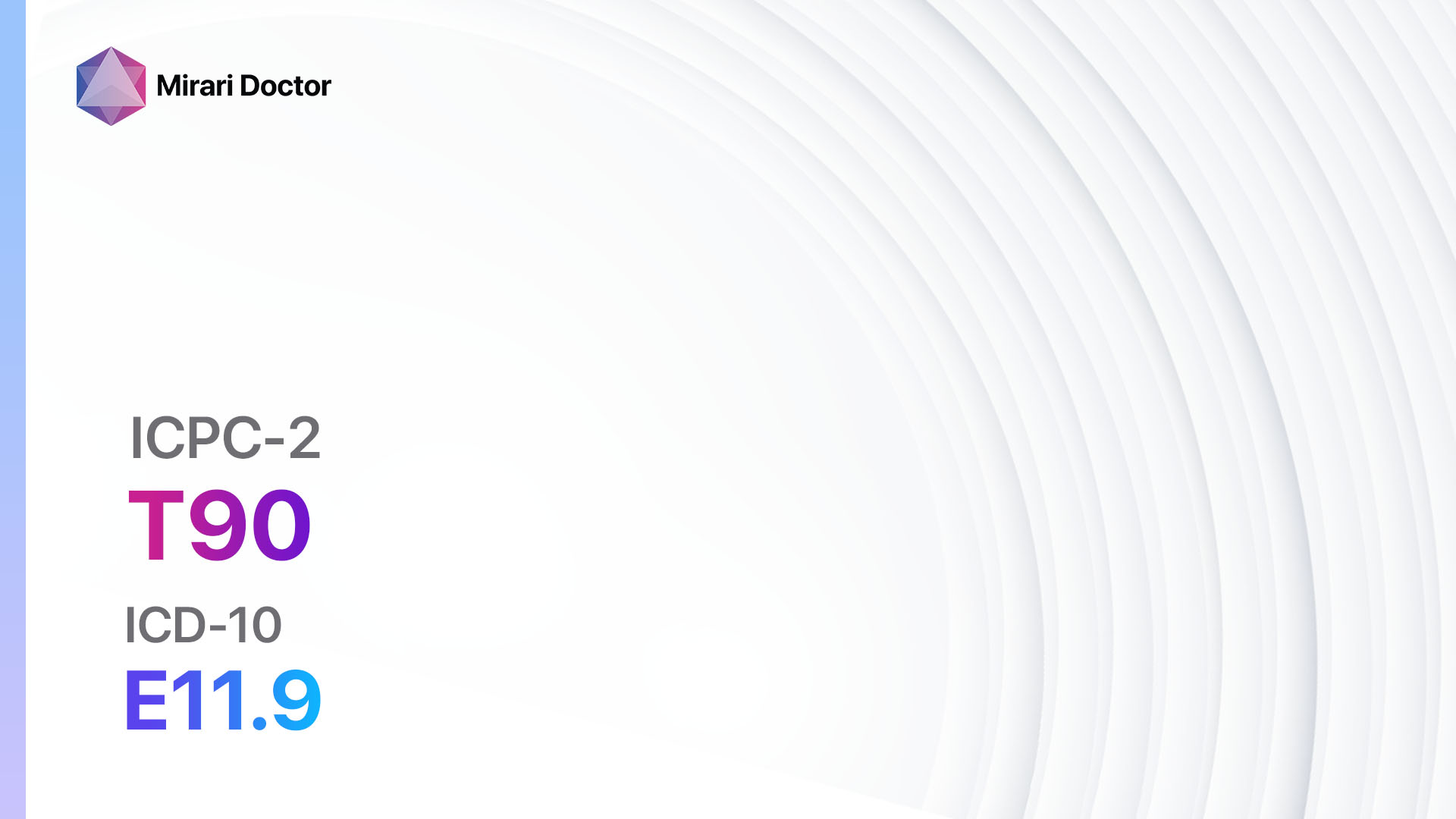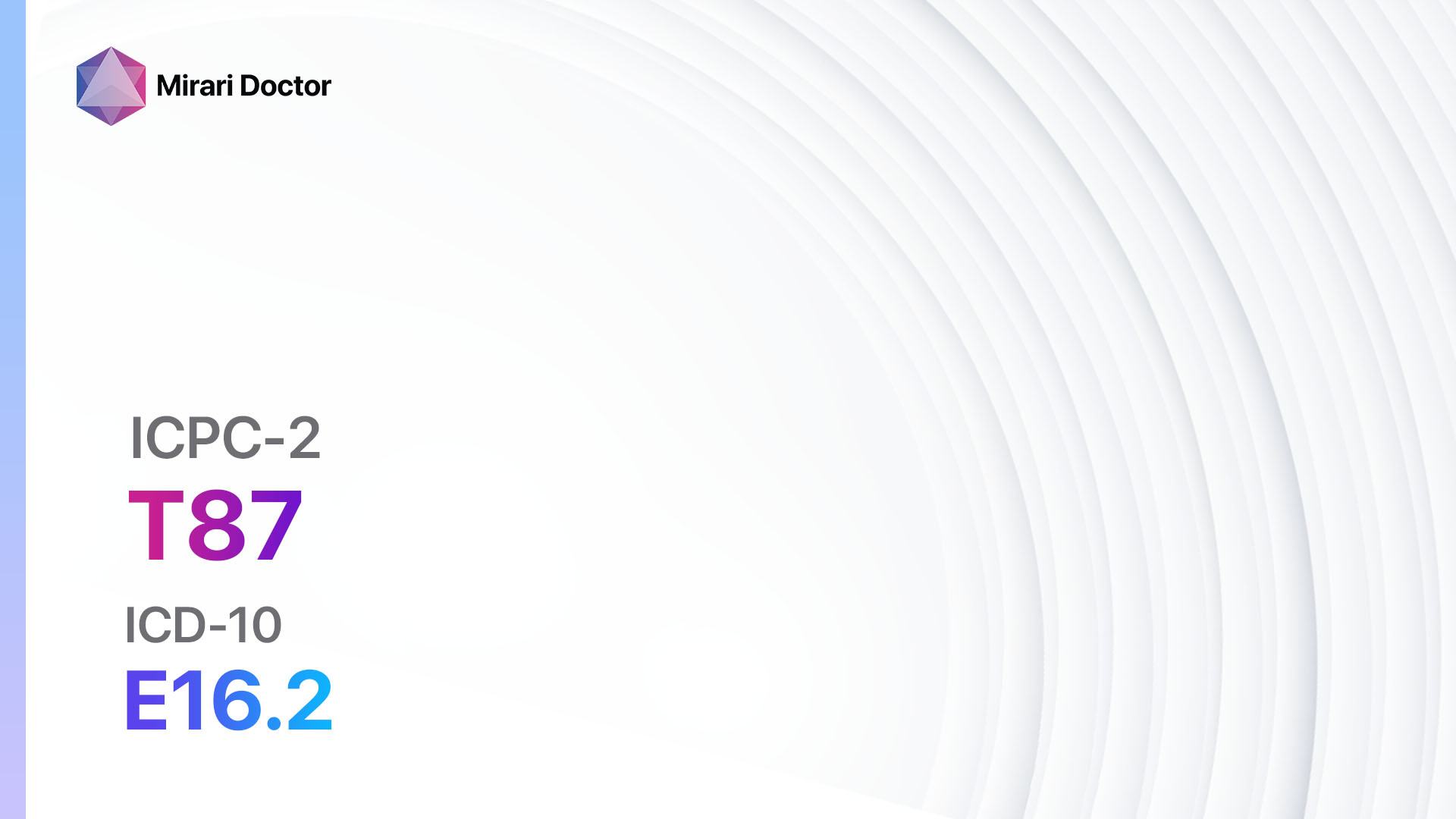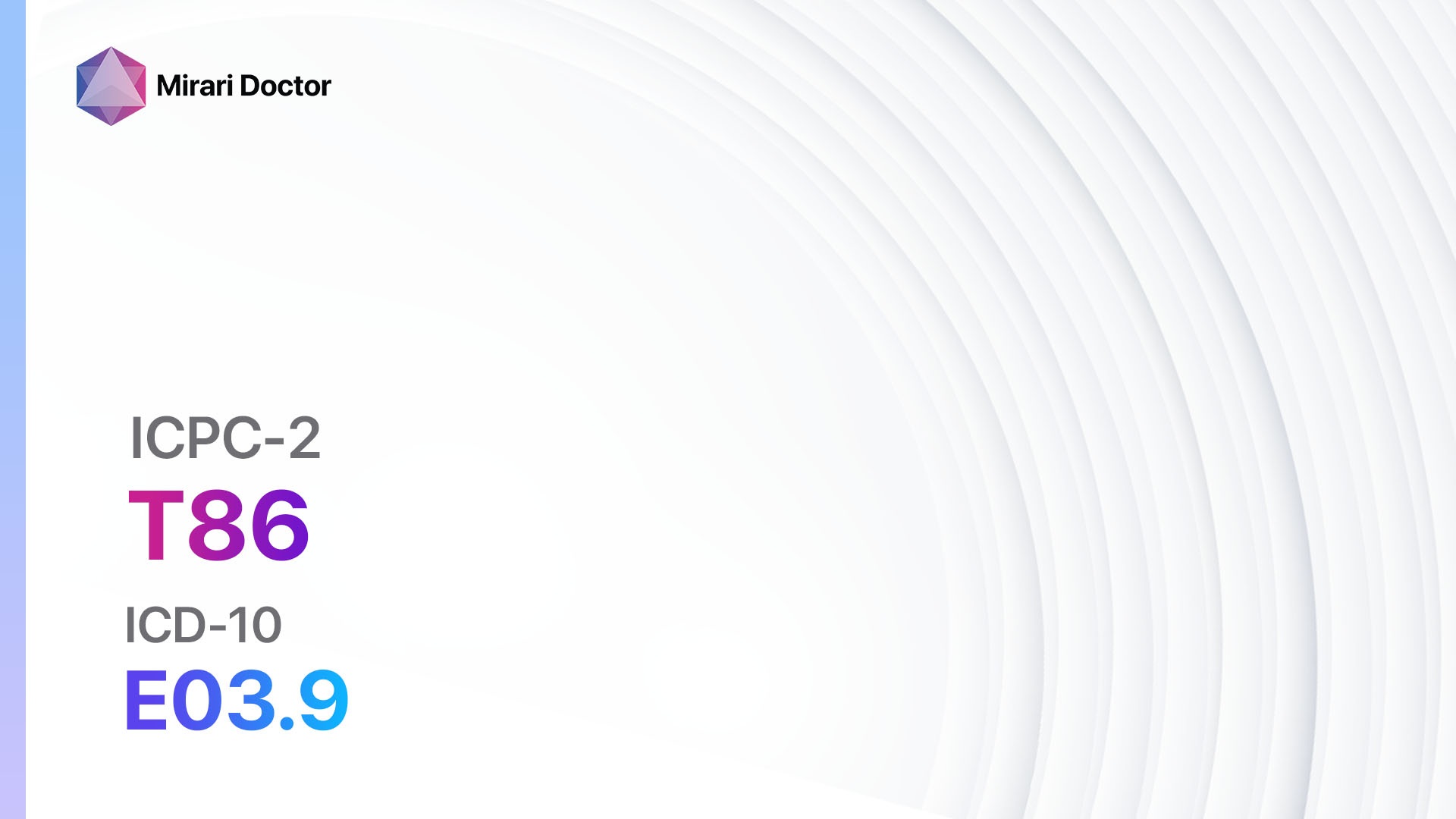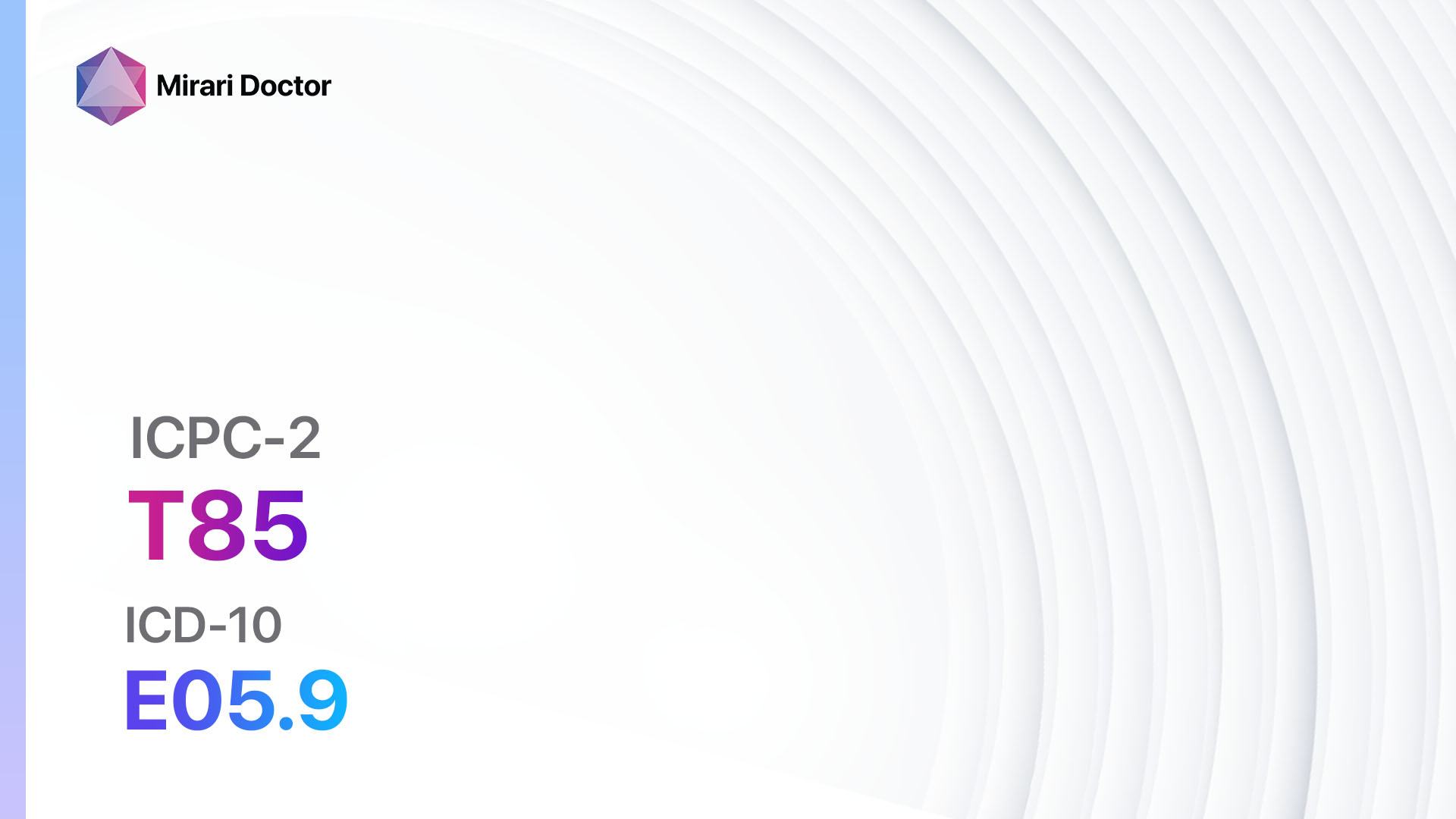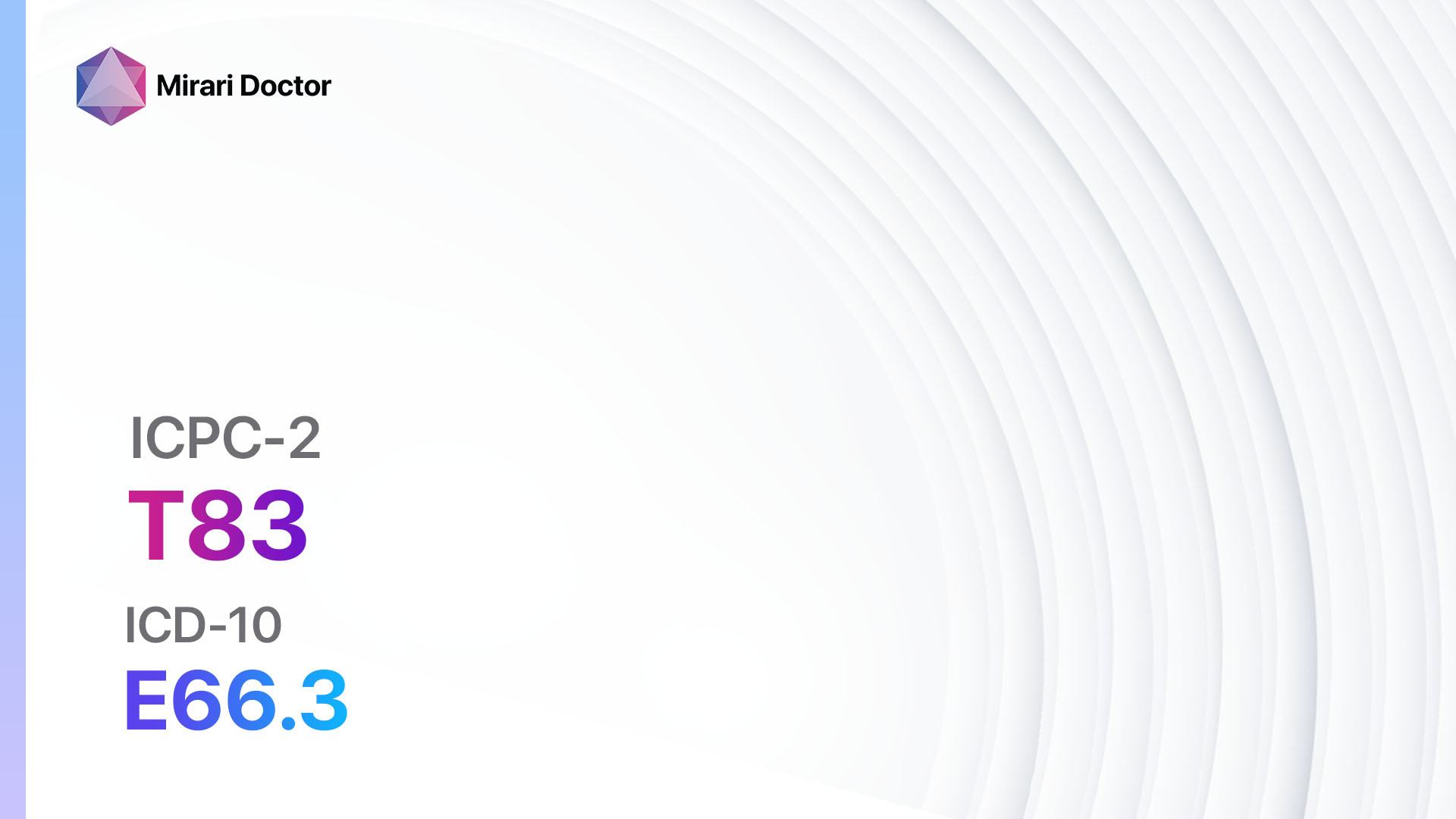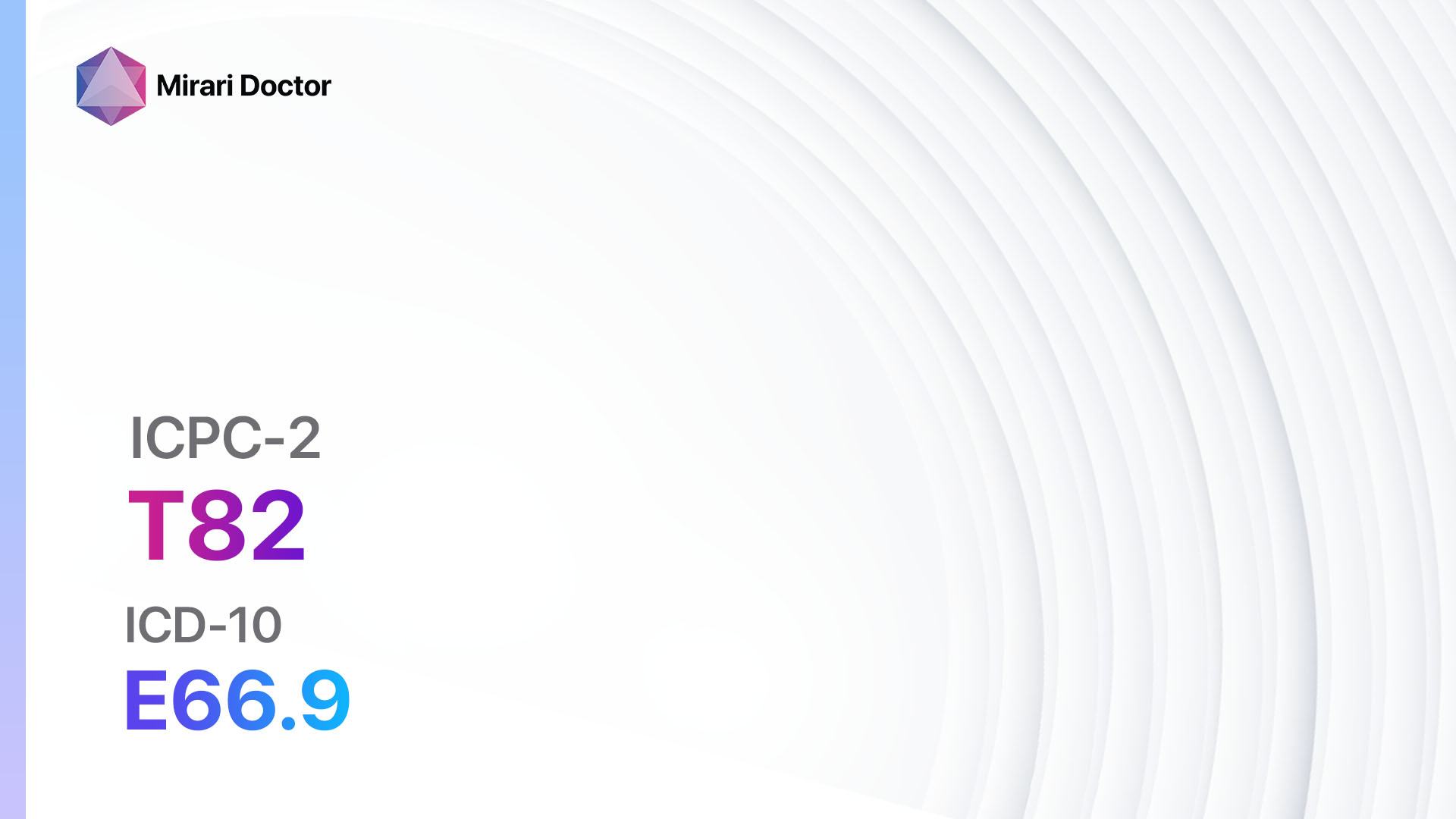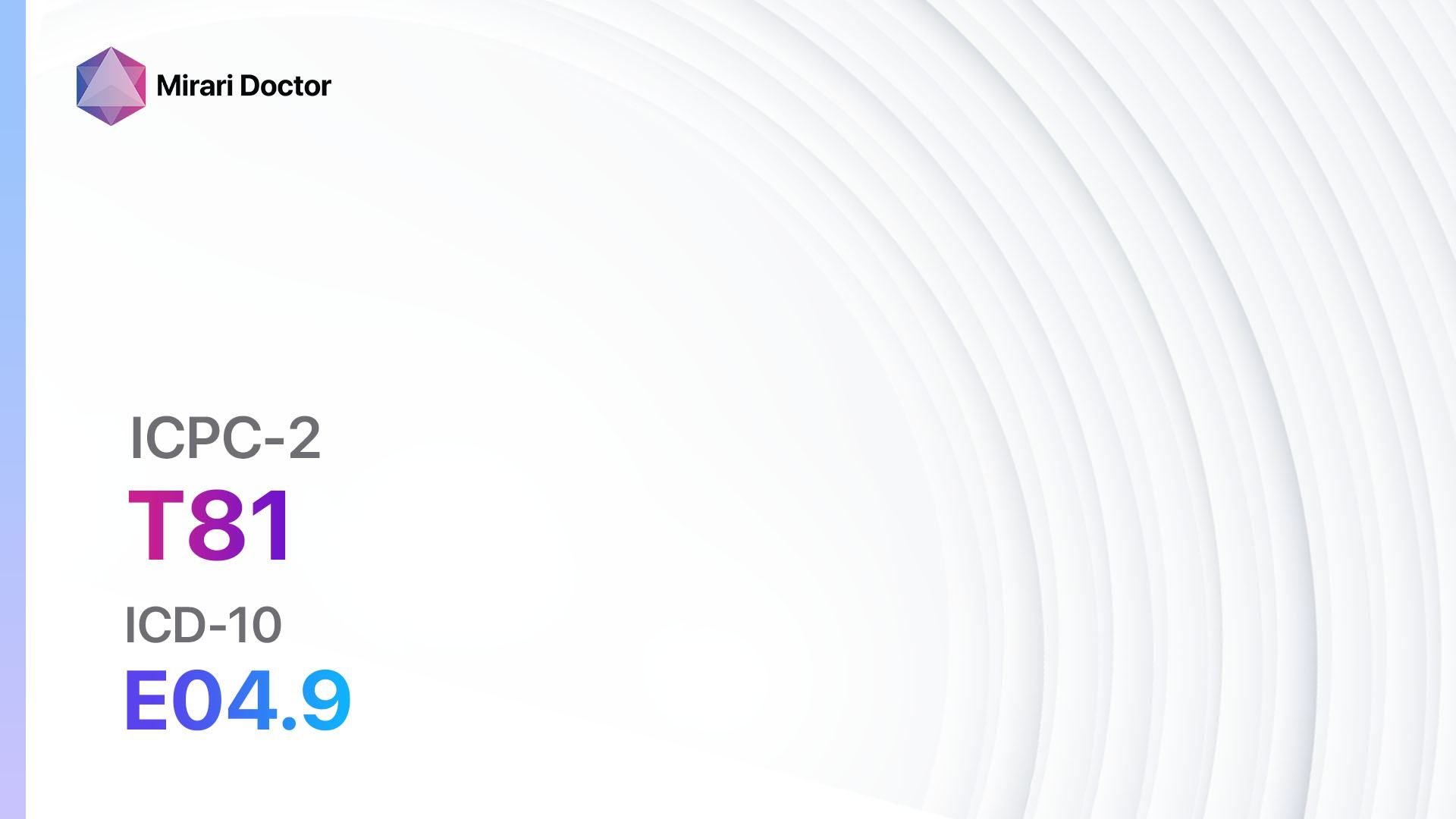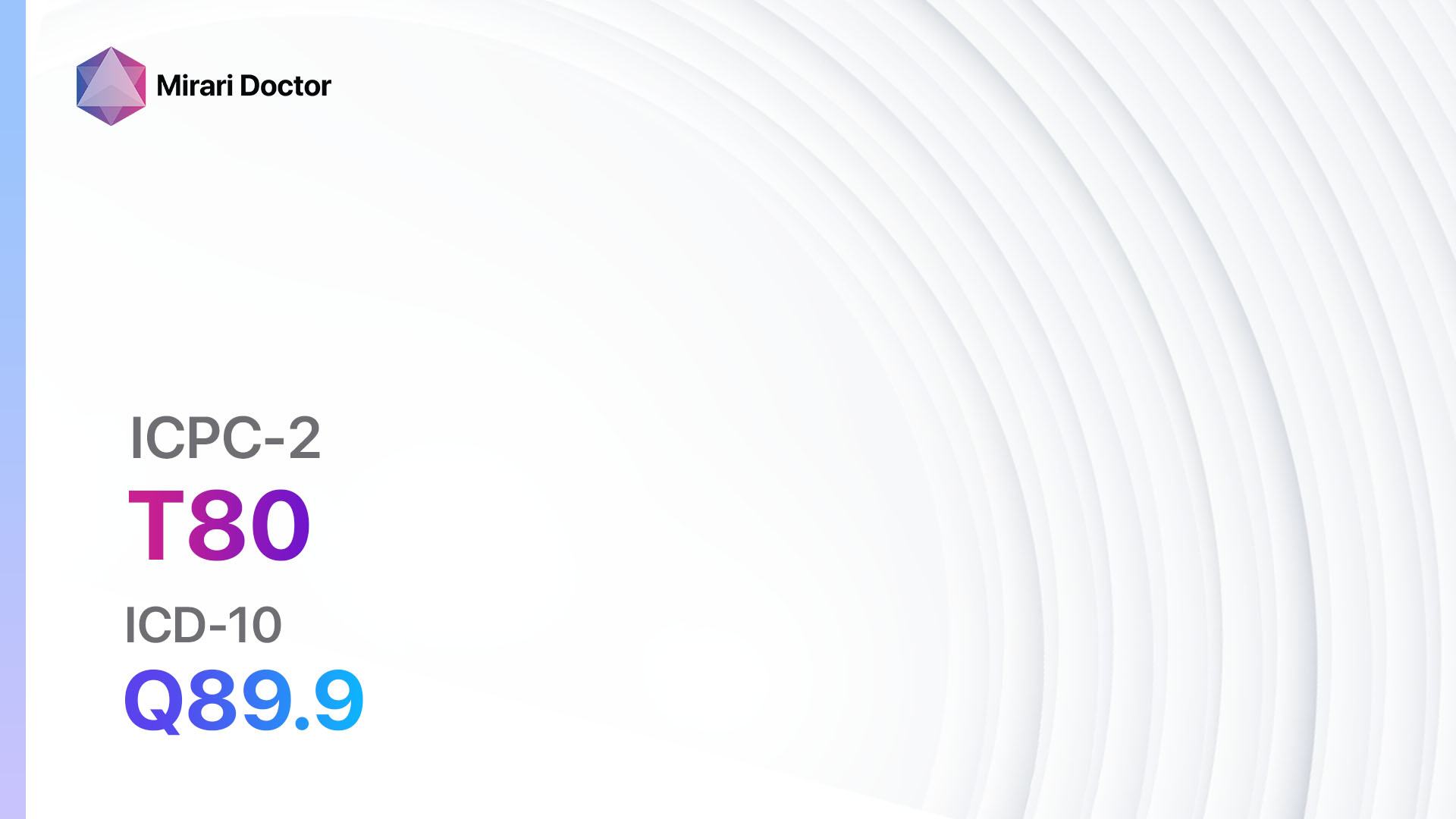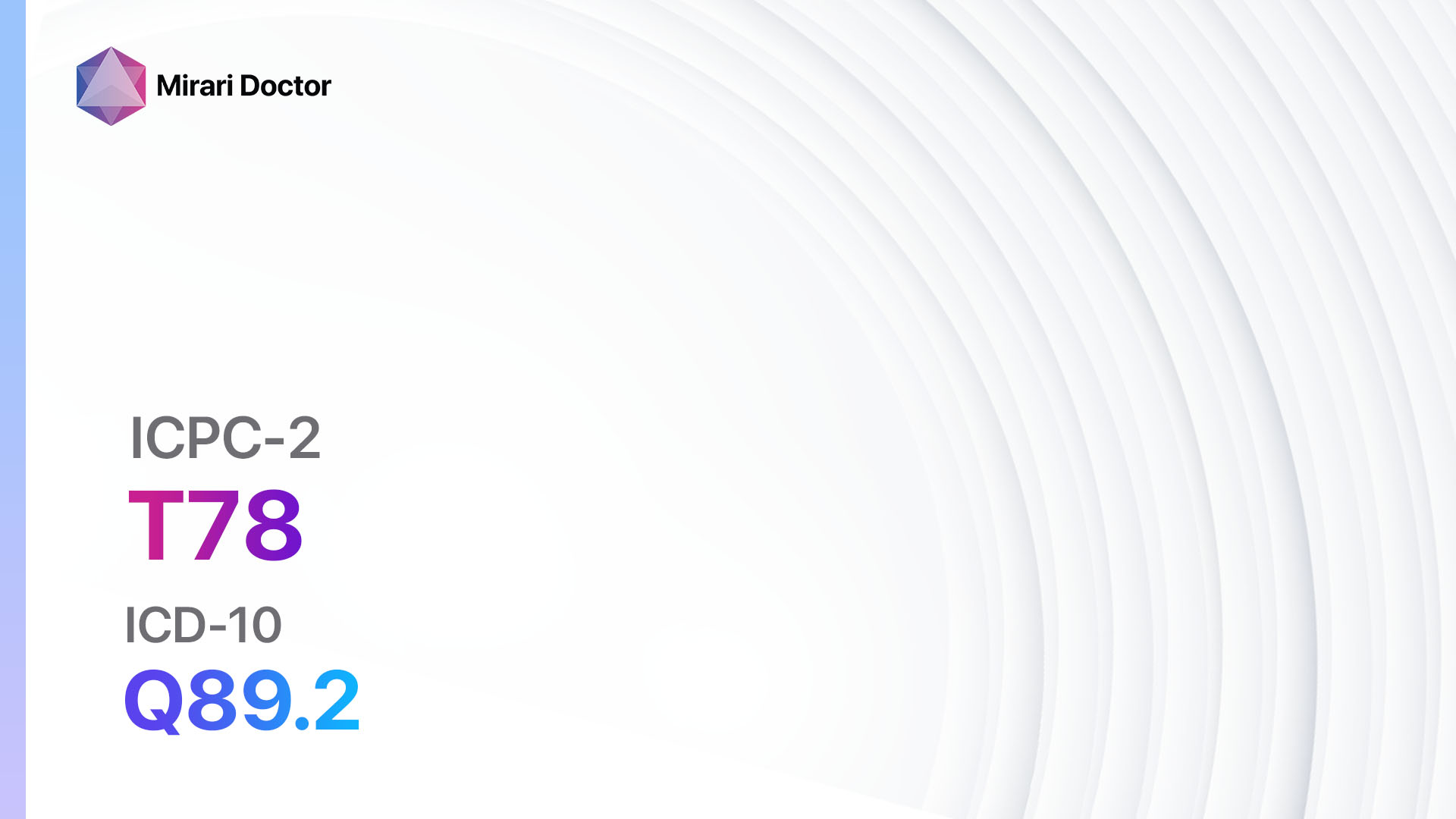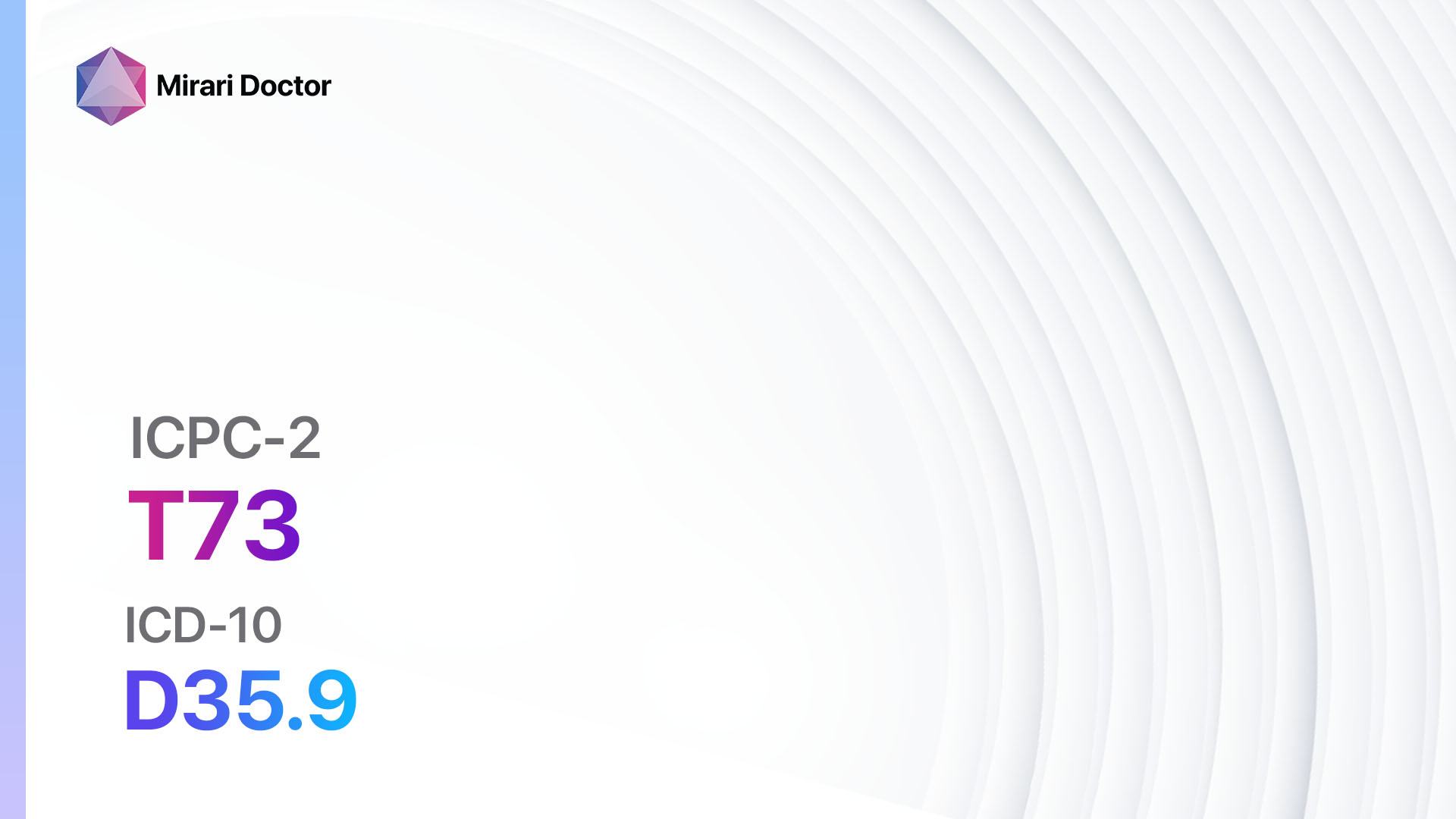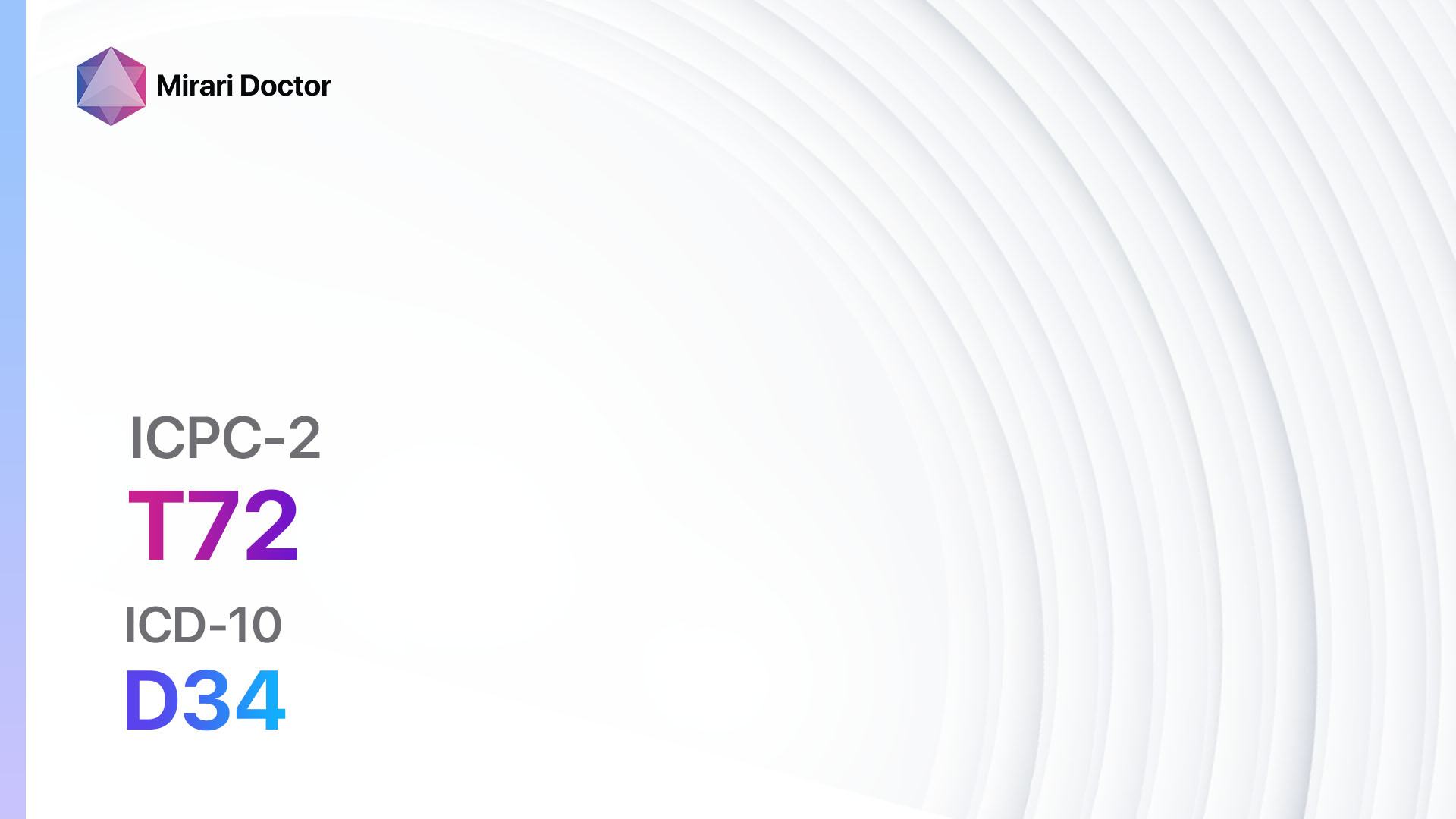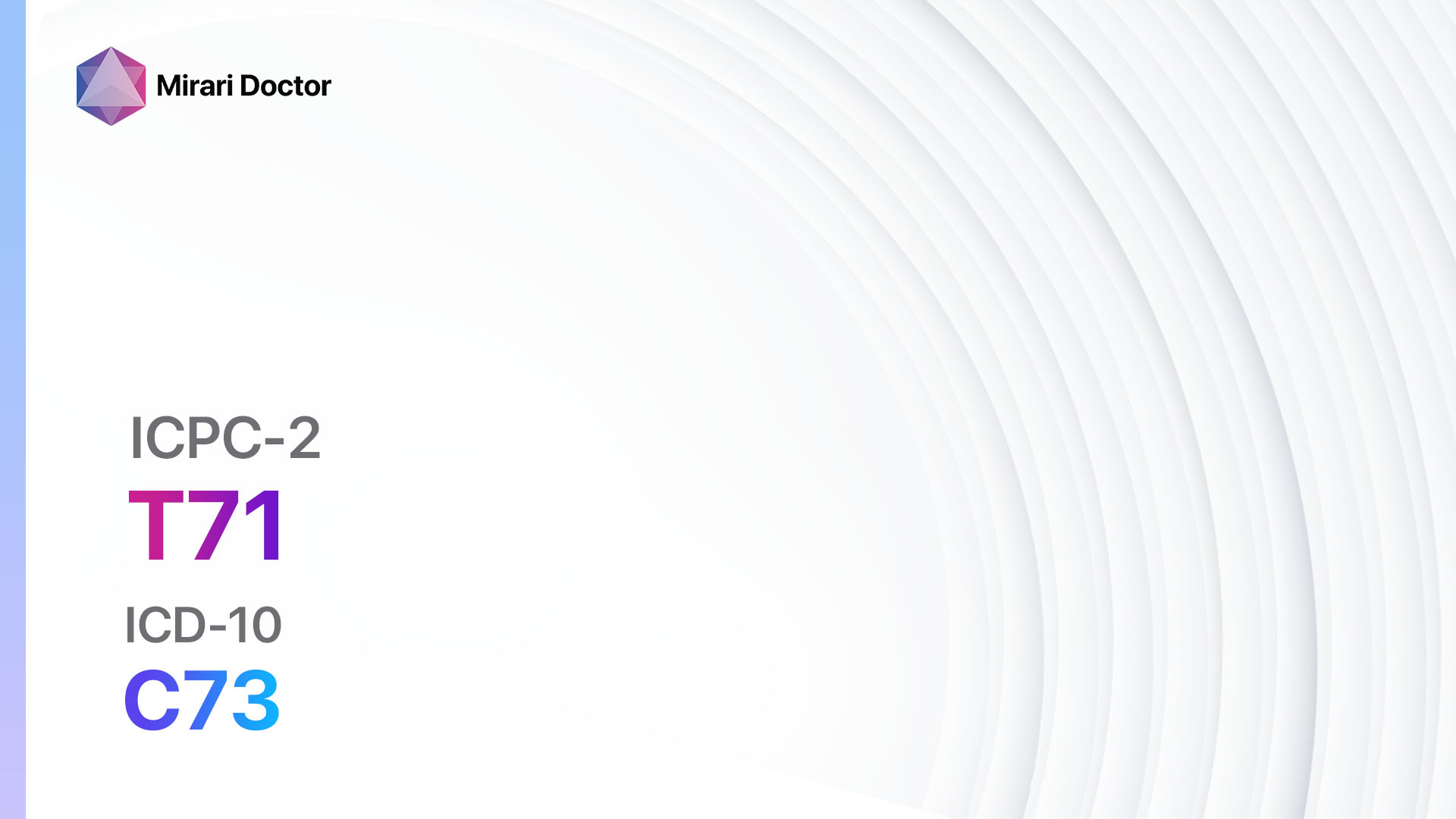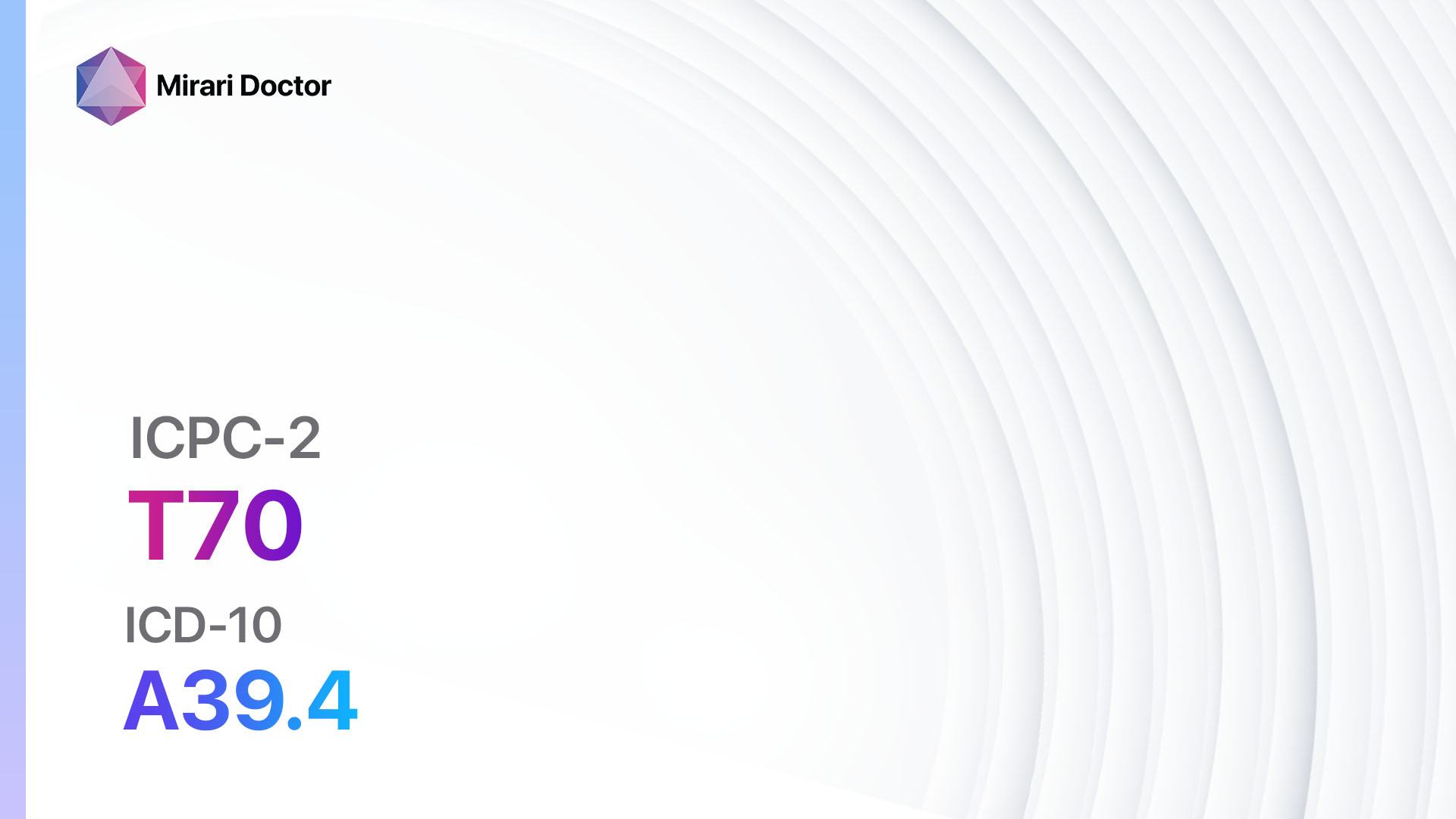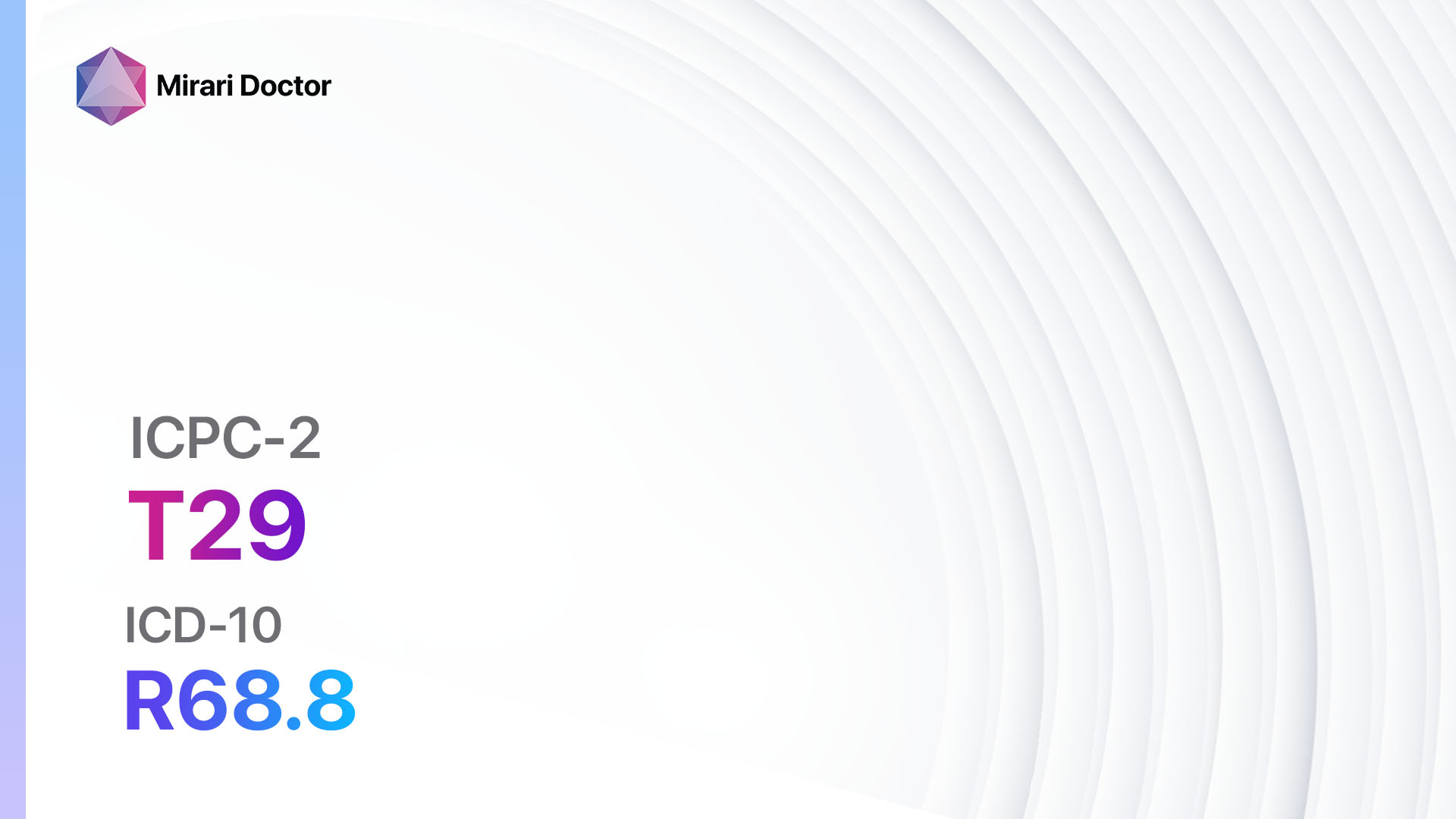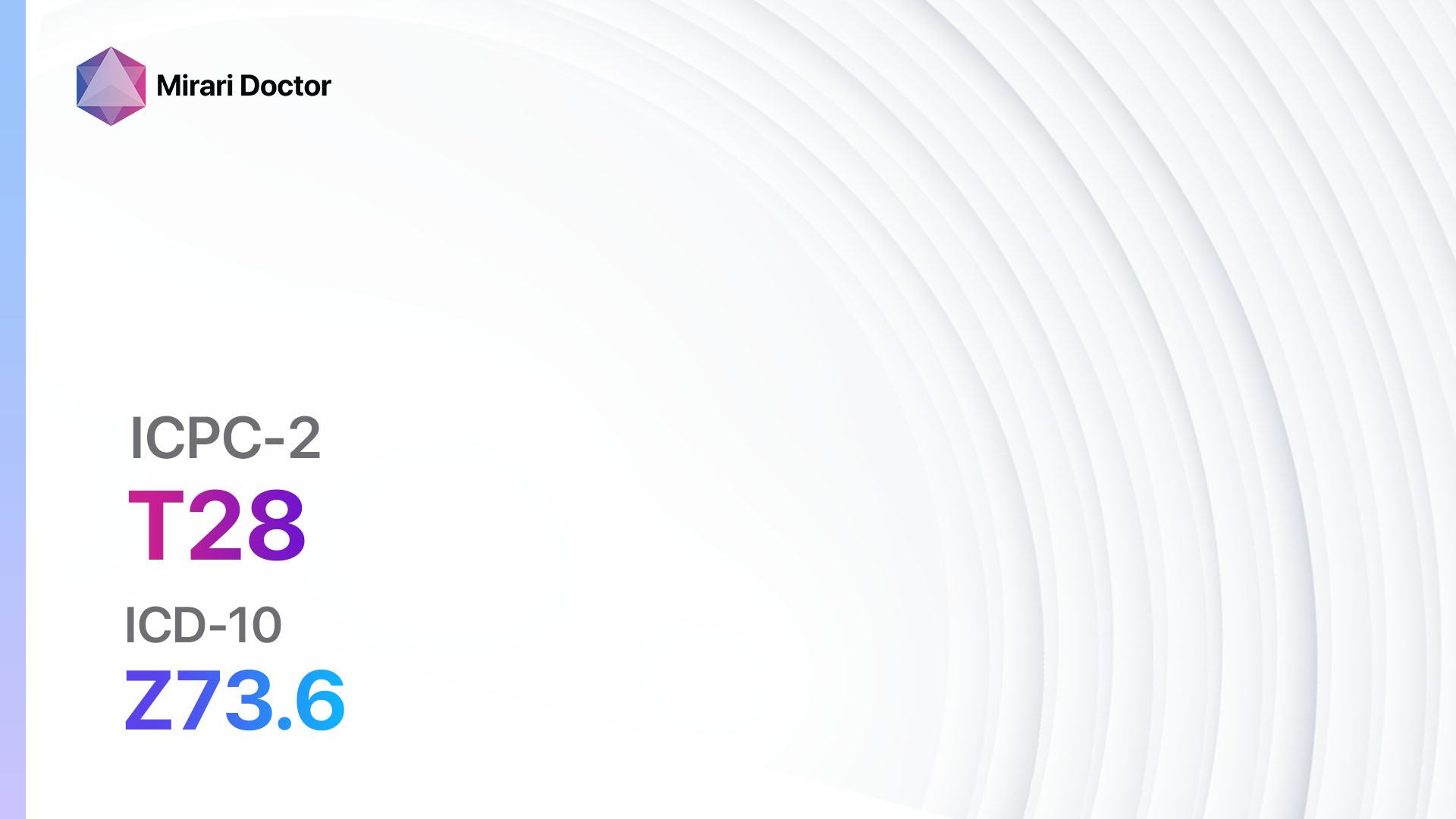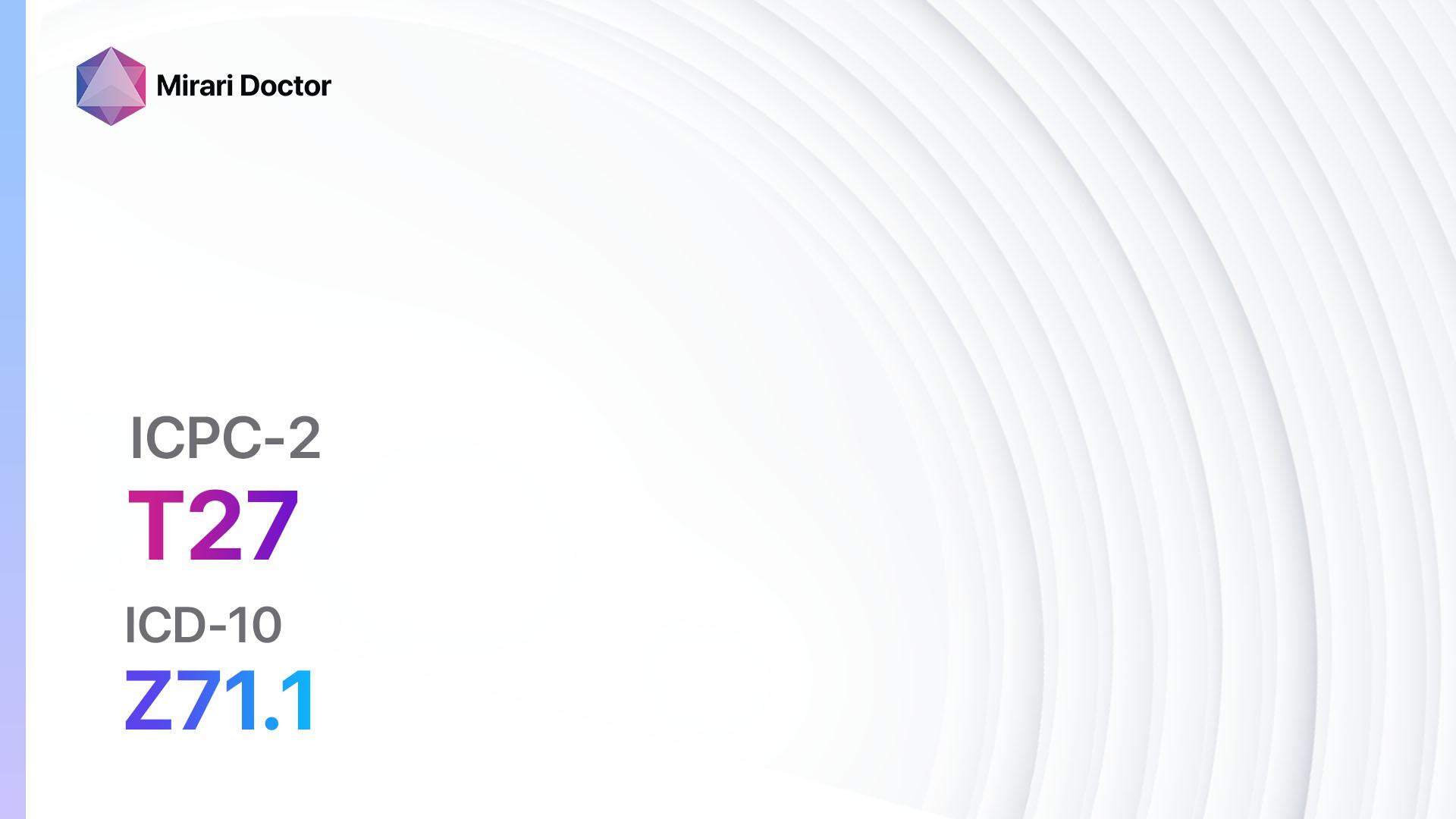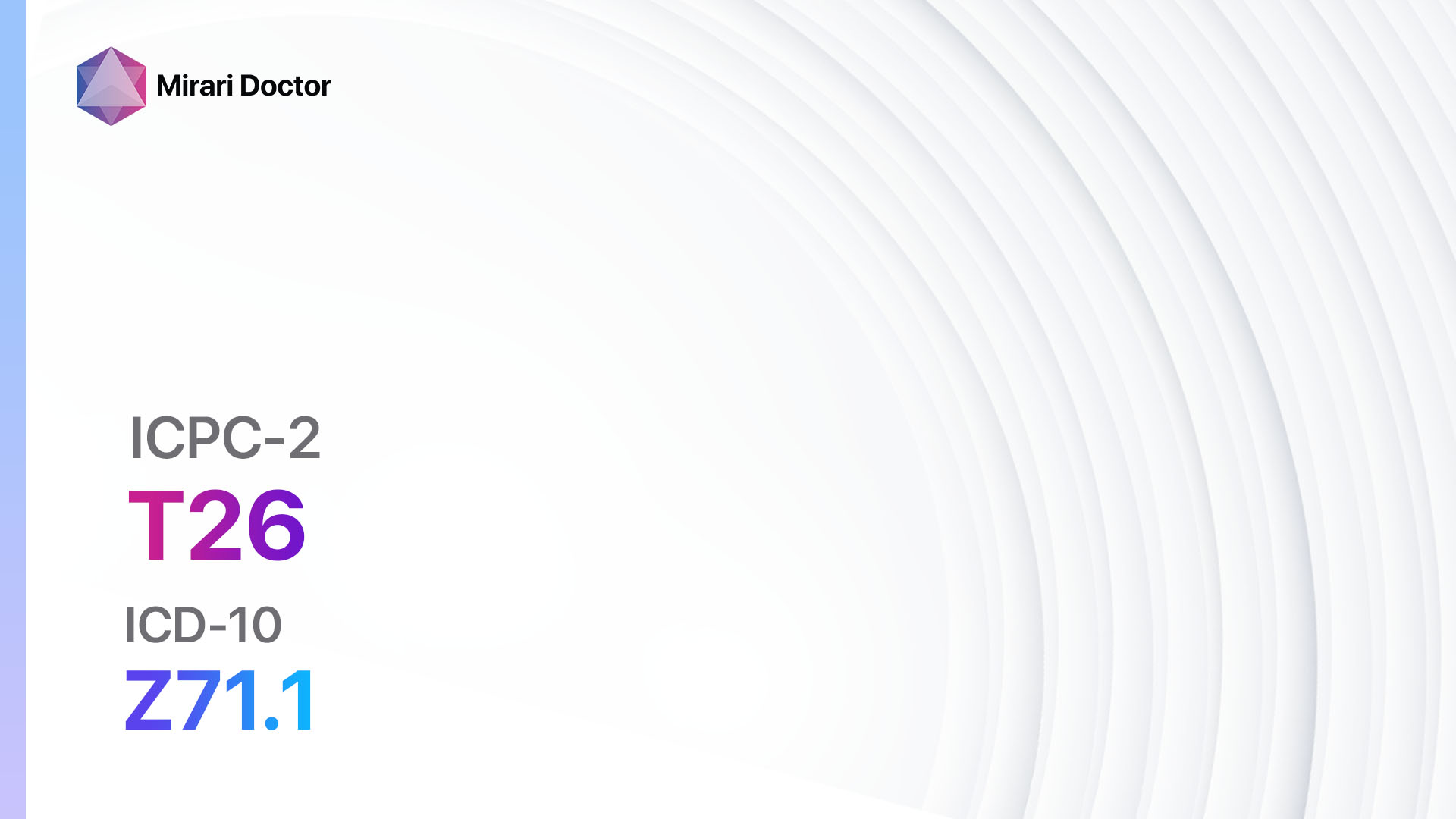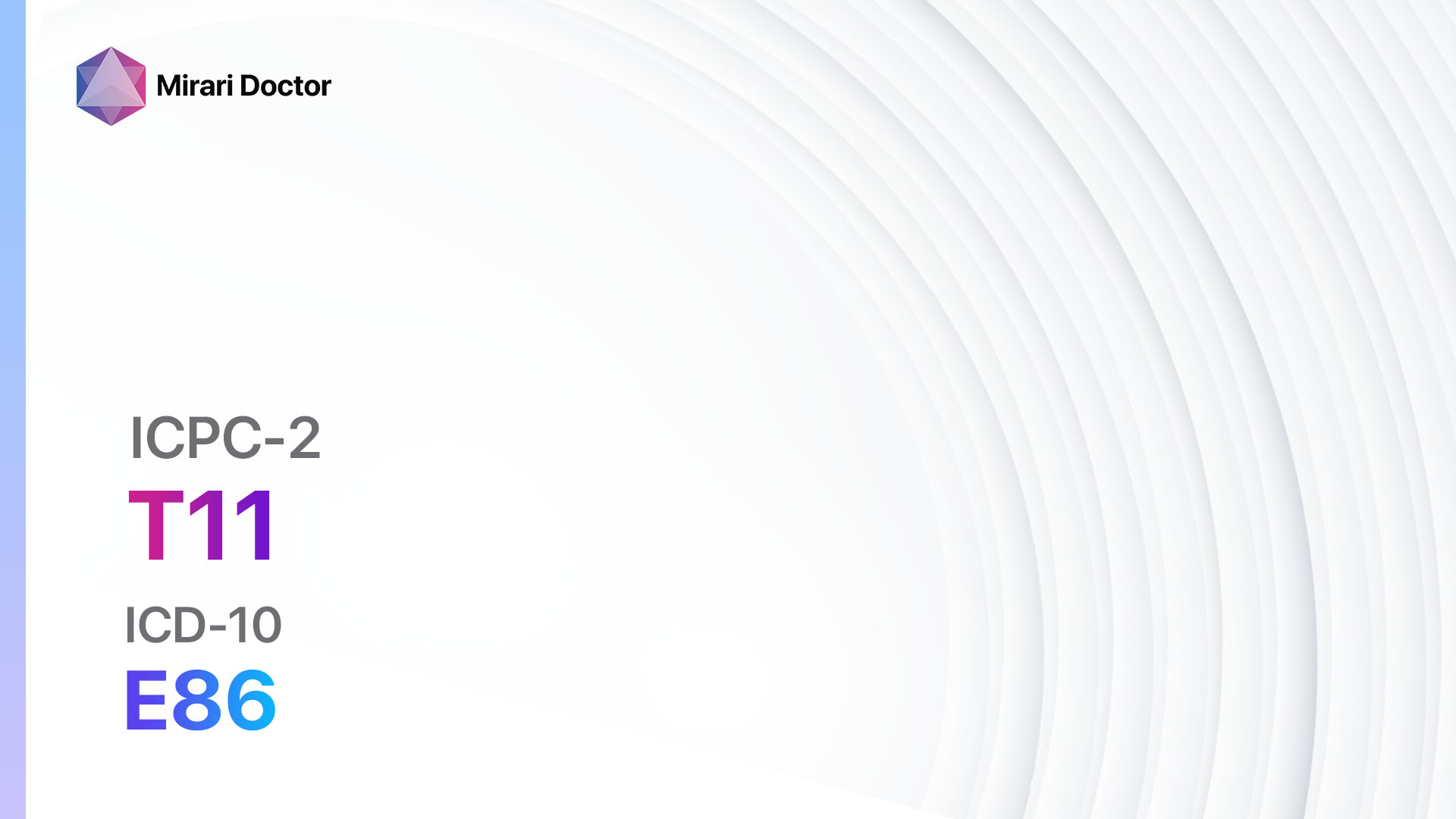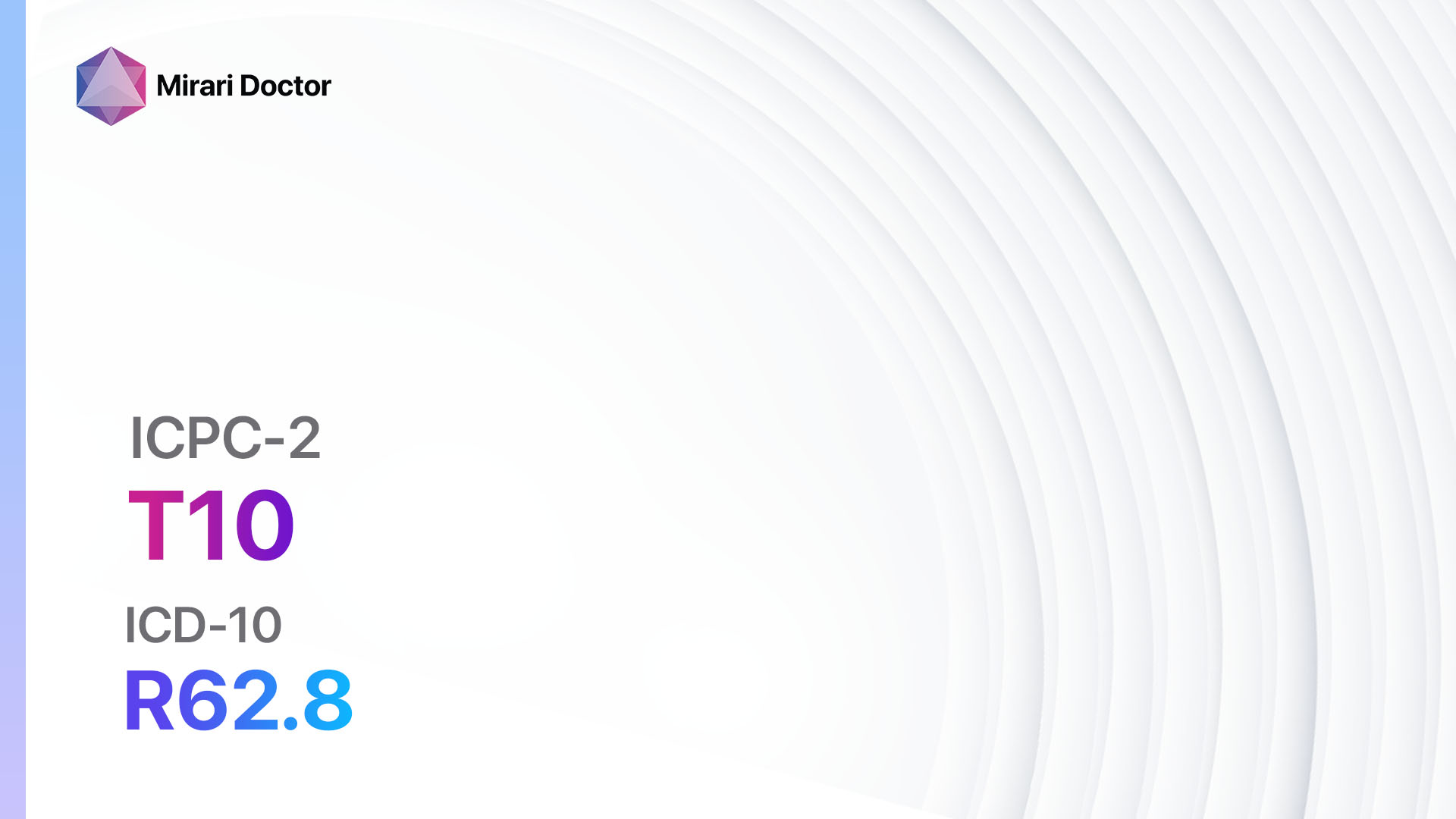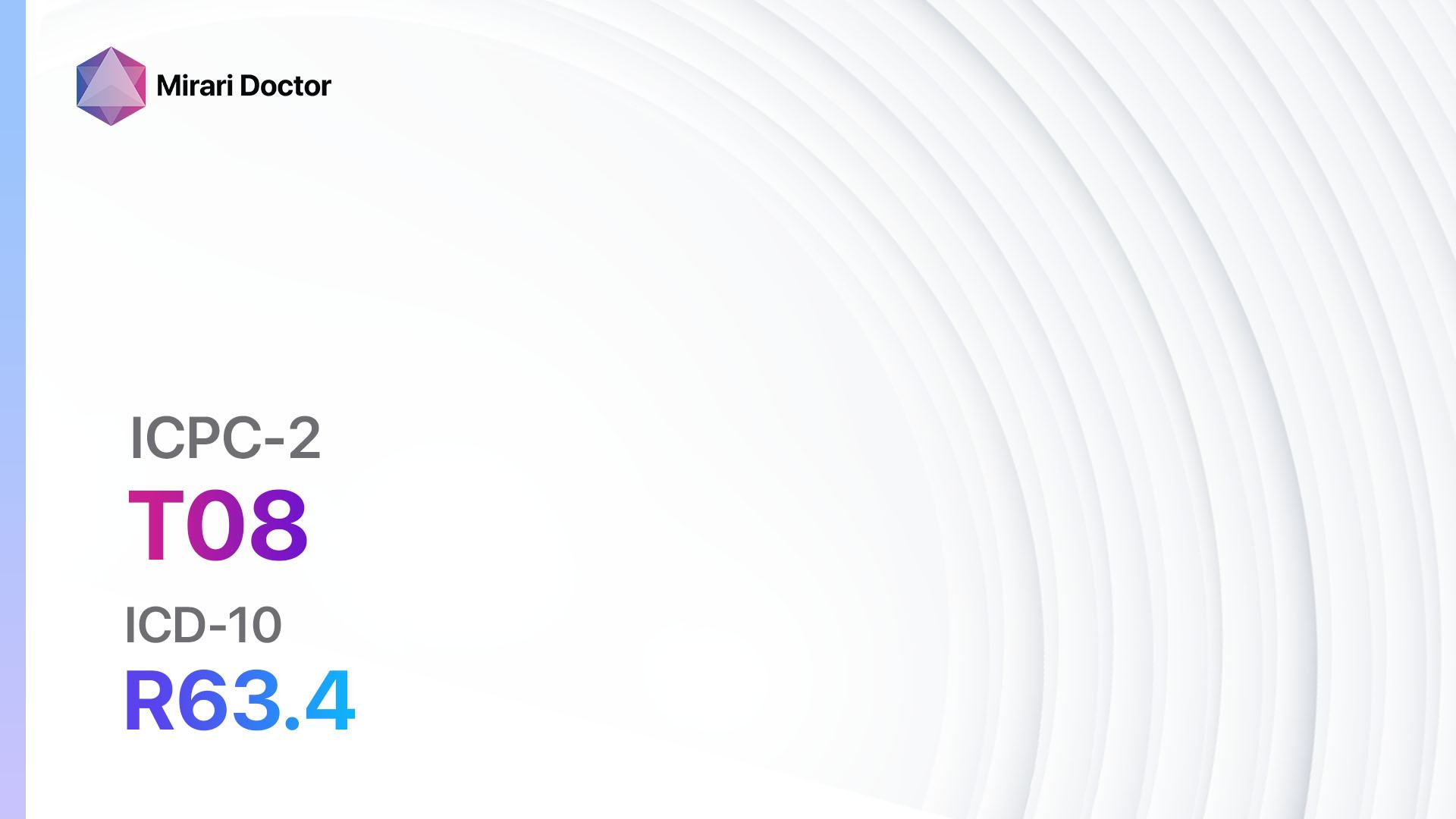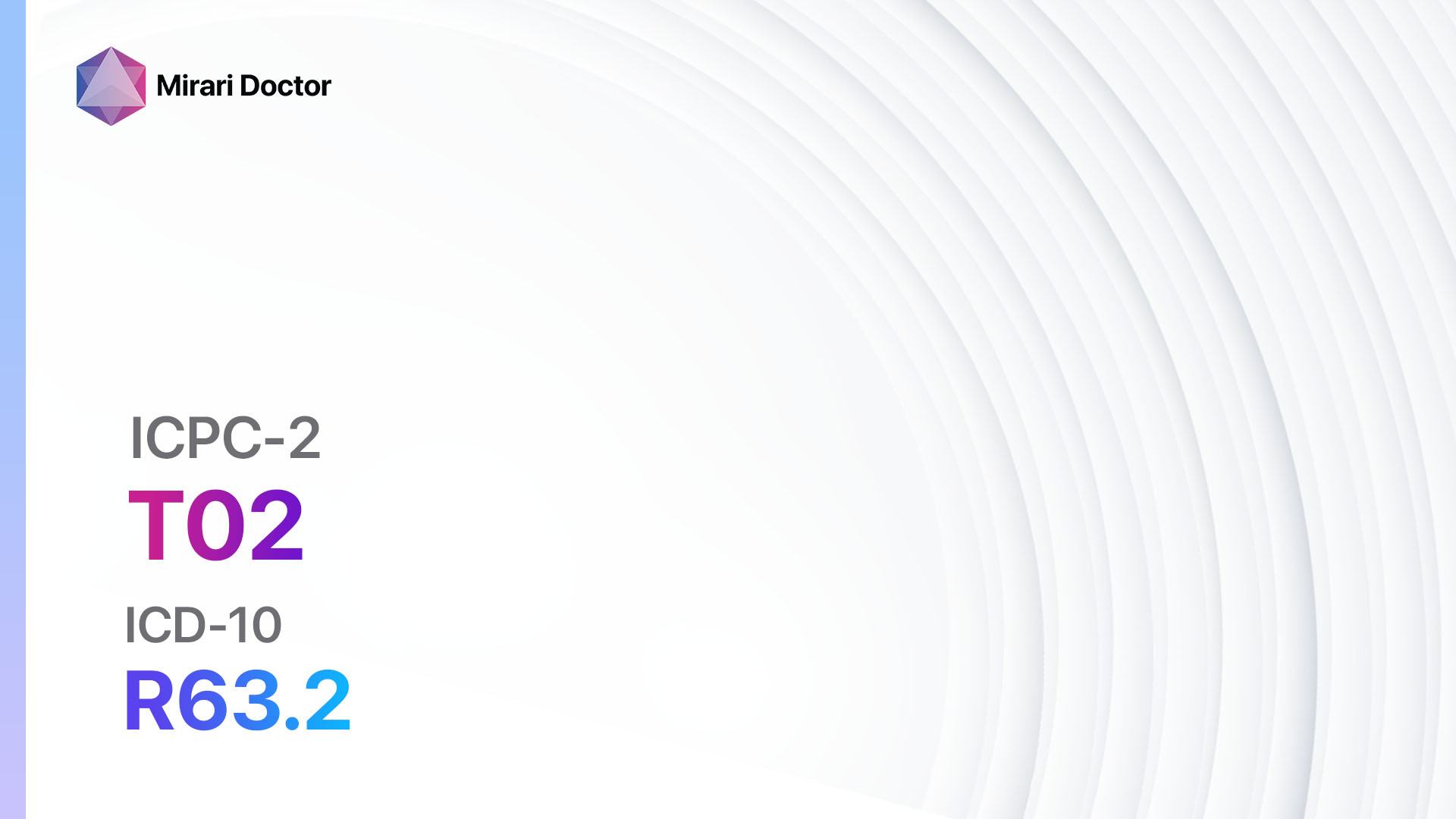
Introduction
Excessive appetite, also known as polyphagia, is a condition characterized by an abnormal increase in appetite and food consumption[1]. It can be a symptom of various underlying medical conditions, such as diabetes, hyperthyroidism, or certain psychiatric disorders[2][3]. This guide aims to provide a comprehensive overview of the diagnostic steps, possible interventions, and lifestyle modifications for excessive appetite.
Codes
Symptoms
- Increased hunger and appetite[4]
- Persistent thoughts about food
- Rapid weight gain or difficulty losing weight[5]
- Frequent eating or snacking throughout the day
- Feeling unsatisfied or still hungry after eating[6]
Causes
- Diabetes: High blood sugar levels can lead to increased hunger and appetite[7].
- Hyperthyroidism: Overactive thyroid gland can cause an increase in metabolic rate and appetite[8].
- Psychiatric disorders: Conditions such as depression, anxiety, or binge eating disorder can be associated with excessive appetite[9].
- Medications: Certain medications, such as corticosteroids or antidepressants, may increase appetite as a side effect[10].
- Pregnancy: Hormonal changes during pregnancy can lead to increased appetite.
Diagnostic Steps
Medical History
- Gather information about the patient’s eating habits, including the frequency and quantity of food consumed.
- Ask about any recent changes in appetite or weight.
- Inquire about any underlying medical conditions or medications that may contribute to excessive appetite.
Physical Examination
- Measure the patient’s height, weight, and body mass index (BMI).
- Check for signs of underlying medical conditions, such as enlarged thyroid gland or signs of diabetes.
Laboratory Tests
- Fasting blood glucose test: To check for diabetes or impaired glucose tolerance.
- Thyroid function tests: To evaluate thyroid hormone levels.
- Complete blood count (CBC): To rule out anemia or other blood disorders.
- Lipid profile: To assess cholesterol and triglyceride levels.
- Hormone levels: To evaluate levels of hormones involved in appetite regulation, such as leptin or ghrelin.
Diagnostic Imaging
- Abdominal ultrasound: To assess the structure and function of the digestive organs.
- Brain imaging (MRI or CT scan): To evaluate the brain for any abnormalities that may be causing excessive appetite.
Other Tests
- Psychological evaluation: To assess for any underlying psychiatric disorders contributing to excessive appetite.
- Food diary: Keeping a record of food intake and hunger levels can help identify patterns and triggers for excessive appetite.
Follow-up and Patient Education
- Schedule regular follow-up appointments to monitor progress and adjust treatment if necessary.
- Educate the patient about the importance of maintaining a balanced diet and healthy eating habits.
- Provide resources for support groups or counseling services for patients with underlying psychiatric disorders.
Possible Interventions
Traditional Interventions
Medications:
Top 5 drugs for excessive appetite:
- Metformin (for diabetes):
- Cost: Generic versions can be $4-$20/month.
- Contraindications: Severe kidney or liver disease.
- Side effects: Nausea, diarrhea, stomach upset.
- Severe side effects: Lactic acidosis (rare but serious).
- Drug interactions: Alcohol, certain medications for heart disease.
- Warning: Regular monitoring of kidney function required.
- Methimazole (for hyperthyroidism):
- Cost: Generic versions can be $10-$30/month.
- Contraindications: Hypersensitivity to methimazole.
- Side effects: Nausea, vomiting, rash.
- Severe side effects: Agranulocytosis (rare but serious).
- Drug interactions: Warfarin, beta-blockers.
- Warning: Regular monitoring of thyroid function required.
- Selective serotonin reuptake inhibitors (SSRIs) (for psychiatric disorders):
- Cost: Generic versions can be $4-$20/month.
- Contraindications: Hypersensitivity to SSRIs.
- Side effects: Nausea, headache, sexual dysfunction.
- Severe side effects: Serotonin syndrome (rare but serious).
- Drug interactions: MAO inhibitors, other antidepressants.
- Warning: Increased risk of suicidal thoughts in children and young adults.
- Corticosteroids (for certain medical conditions):
- Cost: Generic versions can be $4-$20/month.
- Contraindications: Active infections, systemic fungal infections.
- Side effects: Increased appetite, weight gain, mood changes.
- Severe side effects: Adrenal suppression, osteoporosis.
- Drug interactions: NSAIDs, anticoagulants.
- Warning: Long-term use may require gradual tapering to avoid adrenal insufficiency.
- Orlistat (for weight management):
- Cost: Generic versions can be $20-$60/month.
- Contraindications: Chronic malabsorption syndrome.
- Side effects: Oily spotting, gas, fecal urgency.
- Severe side effects: Liver injury (rare but serious).
- Drug interactions: Cyclosporine, levothyroxine.
- Warning: Take a multivitamin supplement containing fat-soluble vitamins.
Alternative Drugs:
- Bupropion (for weight management): Cost: $20-$50/month.
- Topiramate (for weight management): Cost: $10-$30/month.
- Liraglutide (for weight management): Cost: $500-$1000/month.
- Naltrexone/bupropion (for weight management): Cost: $200-$400/month.
- Phentermine/topiramate (for weight management): Cost: $100-$200/month.
Surgical Procedures:
- Bariatric surgery: Various procedures, such as gastric bypass or gastric sleeve, can be considered for severe obesity. Cost: $15,000 to $30,000.
Alternative Interventions
- Acupuncture: May help regulate appetite and reduce food cravings. Cost: $60-$120 per session.
- Hypnotherapy: Can be used to address underlying psychological factors contributing to excessive appetite. Cost: $100-$200 per session.
- Mindfulness-based eating: Techniques to promote mindful eating and reduce emotional eating. Cost: Varies depending on the program or therapist.
- Herbal supplements: Some herbs, such as Garcinia cambogia or green tea extract, are marketed for appetite suppression. Cost: Varies depending on the specific supplement.
- Cognitive-behavioral therapy (CBT): Can help identify and modify unhealthy eating behaviors and thoughts. Cost: $100-$200 per session.
Lifestyle Interventions
- Balanced diet: Encourage the patient to consume a variety of nutrient-dense foods and avoid excessive intake of processed or high-calorie foods. Cost: Varies depending on food choices.
- Regular exercise: Engaging in physical activity can help regulate appetite and promote weight management. Cost: Varies depending on the type of exercise (e.g., gym membership, equipment).
- Stress management: Teach stress-reducing techniques, such as deep breathing exercises or meditation, to prevent emotional eating. Cost: Varies depending on the method chosen.
- Sleep hygiene: Adequate sleep is important for appetite regulation. Encourage the patient to establish a regular sleep schedule and practice good sleep habits. Cost: Varies depending on individual needs.
- Support groups: Recommend joining support groups or seeking counseling to address emotional factors contributing to excessive appetite. Cost: Varies depending on the program or therapist.
It is important to note that the cost ranges provided are approximate and may vary depending on the location and availability of the interventions.
Mirari Cold Plasma Alternative Intervention
Understanding Mirari Cold Plasma
- Safe and Non-Invasive Treatment: Mirari Cold Plasma is a safe and non-invasive treatment option for various skin conditions. It does not require incisions, minimizing the risk of scarring, bleeding, or tissue damage.
- Efficient Extraction of Foreign Bodies: Mirari Cold Plasma facilitates the removal of foreign bodies from the skin by degrading and dissociating organic matter, allowing easier access and extraction.
- Pain Reduction and Comfort: Mirari Cold Plasma has a local analgesic effect, providing pain relief during the treatment, making it more comfortable for the patient.
- Reduced Risk of Infection: Mirari Cold Plasma has antimicrobial properties, effectively killing bacteria and reducing the risk of infection.
- Accelerated Healing and Minimal Scarring: Mirari Cold Plasma stimulates wound healing and tissue regeneration, reducing healing time and minimizing the formation of scars.
Mirari Cold Plasma Prescription
Video instructions for using Mirari Cold Plasma Device – T02 Excessive appetite (ICD-10:R63.2)
| Mild | Moderate | Severe |
| Mode setting: 2 (Wound Healing) Location: 4 (Heart, Bile & Pancreas) Morning: 15 minutes, Evening: 15 minutes |
Mode setting: 2 (Wound Healing) Location: 4 (Heart, Bile & Pancreas) Morning: 30 minutes, Lunch: 30 minutes, Evening: 30 minutes |
Mode setting: 2 (Wound Healing) Location: 4 (Heart, Bile & Pancreas) Morning: 30 minutes, Lunch: 30 minutes, Evening: 30 minutes |
| Mode setting: 2 (Wound Healing) Location: 6 (Throat, Lymphatic & Thyroid) Morning: 15 minutes, Evening: 15 minutes |
Mode setting: 2 (Wound Healing) Location: 6 (Throat, Lymphatic & Thyroid) Morning: 30 minutes, Lunch: 30 minutes, Evening: 30 minutes |
Mode setting: 2 (Wound Healing) Location: 6 (Throat, Lymphatic & Thyroid) Morning: 30 minutes, Lunch: 30 minutes, Evening: 30 minutes |
| Mode setting: 3 (Antiviral Therapy) Location: 0 (Localized) Morning: 15 minutes, Evening: 15 minutes |
Mode setting: 3 (Antiviral Therapy) Location: 0 (Localized) Morning: 30 minutes, Lunch: 30 minutes, Evening: 30 minutes |
Mode setting: 3 (Antiviral Therapy) Location: 0 (Localized) Morning: 30 minutes, Lunch: 30 minutes, Evening: 30 minutes |
| Total Morning: 45 minutes approx. $7.50 USD, Evening: 45 minutes approx. $7.50 USD |
Total Morning: 90 minutes approx. $15 USD, Lunch: 90 minutes approx. $15 USD, Evening: 90 minutes approx. $15 USD |
Total Morning: 90 minutes approx. $15 USD, Lunch: 90 minutes approx. $15 USD, Evening: 90 minutes approx. $15 USD |
| Usual treatment for 7-60 days approx. $105 USD – $900 USD | Usual treatment for 6-8 weeks approx. $1,890 USD – $2,520 USD |
Usual treatment for 3-6 months approx. $4,050 USD – $8,100 USD
|
 |
|
Use the Mirari Cold Plasma device to treat Excessive appetite effectively.
WARNING: MIRARI COLD PLASMA IS DESIGNED FOR THE HUMAN BODY WITHOUT ANY ARTIFICIAL OR THIRD PARTY PRODUCTS. USE OF OTHER PRODUCTS IN COMBINATION WITH MIRARI COLD PLASMA MAY CAUSE UNPREDICTABLE EFFECTS, HARM OR INJURY. PLEASE CONSULT A MEDICAL PROFESSIONAL BEFORE COMBINING ANY OTHER PRODUCTS WITH USE OF MIRARI.
Step 1: Cleanse the Skin
- Start by cleaning the affected area of the skin with a gentle cleanser or mild soap and water. Gently pat the area dry with a clean towel.
Step 2: Prepare the Mirari Cold Plasma device
- Ensure that the Mirari Cold Plasma device is fully charged or has fresh batteries as per the manufacturer’s instructions. Make sure the device is clean and in good working condition.
- Switch on the Mirari device using the power button or by following the specific instructions provided with the device.
- Some Mirari devices may have adjustable settings for intensity or treatment duration. Follow the manufacturer’s instructions to select the appropriate settings based on your needs and the recommended guidelines.
Step 3: Apply the Device
- Place the Mirari device in direct contact with the affected area of the skin. Gently glide or hold the device over the skin surface, ensuring even coverage of the area experiencing.
- Slowly move the Mirari device in a circular motion or follow a specific pattern as indicated in the user manual. This helps ensure thorough treatment coverage.
Step 4: Monitor and Assess:
- Keep track of your progress and evaluate the effectiveness of the Mirari device in managing your Excessive appetite. If you have any concerns or notice any adverse reactions, consult with your health care professional.
Note
This guide is for informational purposes only and should not replace the advice of a medical professional. Always consult with your healthcare provider or a qualified medical professional for personal advice, diagnosis, or treatment. Do not solely rely on the information presented here for decisions about your health. Use of this information is at your own risk. The authors of this guide, nor any associated entities or platforms, are not responsible for any potential adverse effects or outcomes based on the content.
Mirari Cold Plasma System Disclaimer
- Purpose: The Mirari Cold Plasma System is a Class 2 medical device designed for use by trained healthcare professionals. It is registered for use in Thailand and Vietnam. It is not intended for use outside of these locations.
- Informational Use: The content and information provided with the device are for educational and informational purposes only. They are not a substitute for professional medical advice or care.
- Variable Outcomes: While the device is approved for specific uses, individual outcomes can differ. We do not assert or guarantee specific medical outcomes.
- Consultation: Prior to utilizing the device or making decisions based on its content, it is essential to consult with a Certified Mirari Tele-Therapist and your medical healthcare provider regarding specific protocols.
- Liability: By using this device, users are acknowledging and accepting all potential risks. Neither the manufacturer nor the distributor will be held accountable for any adverse reactions, injuries, or damages stemming from its use.
- Geographical Availability: This device has received approval for designated purposes by the Thai and Vietnam FDA. As of now, outside of Thailand and Vietnam, the Mirari Cold Plasma System is not available for purchase or use.
References
- Polyphagia – Symptoms and Causes of Increased Appetite. (n.d.). Diabetes.co.uk. Retrieved June 28, 2024, from https://www.diabetes.co.uk/symptoms/polyphagia.html
- Polyphagia (Hyperphagia): What It Is, Causes & Symptoms. (n.d.). Cleveland Clinic. Retrieved June 28, 2024, from https://my.clevelandclinic.org/health/symptoms/24637-polyphagia-hyperphagia
- Polyphagia: Symptoms, Causes and Treatment – Healthline. (n.d.). Healthline. Retrieved June 28, 2024, from https://www.healthline.com/health/polyphagia
- Increased Appetite: Causes, Diagnosis, and Treatments – Healthline. (n.d.). Healthline. Retrieved June 28, 2024, from https://www.healthline.com/health/appetite-increased
- Appetite – increased: MedlinePlus Medical Encyclopedia. (n.d.). MedlinePlus. Retrieved June 28, 2024, from https://medlineplus.gov/ency/article/003134.htm
- Why Am I Always Hungry: 11 Reasons You’re Hungry All the Time. (n.d.). WebMD. Retrieved June 28, 2024, from https://www.webmd.com/diet/reasons-always-hungry
- Polyphagia – Wikipedia. (n.d.). Wikipedia. Retrieved June 28, 2024, from https://en.wikipedia.org/wiki/Polyphagia
- Increased appetite: Why it happens, causes, and management tips. (n.d.). Medical News Today. Retrieved June 28, 2024, from https://www.medicalnewstoday.com/articles/increased-appetite
- 8 Reasons You Have an Increased Appetite | Everlywell. (n.d.). Everlywell. Retrieved June 28, 2024, from https://www.everlywell.com/blog/sleep-and-stress/reasons-for-increased-appetite/
- Always hungry? There could be medical reasons why | Ohio State …. (n.d.). The Ohio State University Wexner Medical Center. Retrieved June 28, 2024, from https://wexnermedical.osu.edu/blog/always-hungry-there-could-be-medical-reasons-why
Related articles
Made in USA


